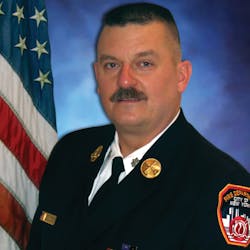The Fire Scene: Effective Tool Inspection
As firefighters know, the tools and equipment that are carried on their apparatus are required for the effective performance of their emergency duties. For this reason, all of the tools and equipment that are stored in every compartment on fire apparatus must be examined and inspected to ensure their effectiveness when required.
In career departments, this inspection process should be conducted daily or at the start of each tour; in volunteer companies, there usually is a weekly drill or training session when these tool and equipment inspections can be conducted.
So, what exactly does this inspection process look like? How is each piece of equipment examined? How does the inspecting firefighter know when each of the tools is ready for service?
First compartment
At the start of a shift at the firehouse, the firefighter who is responsible for equipment inspection opens the first compartment on the driver’s side of the apparatus and observes a collection of hand tools. One or two of them likely are mounted on the back wall of the compartment, and the balance of the tools are positioned closely to each other on the floor, etc., of the compartment. The tools include several forged steel Halligans, several wood-handle axes, a bolt cutter, a fiberglass handle maul and several pry bars.
What must be done by this person to ensure that these items are ready for service?
The first rule here is that each tool must be picked up to be examined. Holding each tool ensures that any loose or cracked handles are discovered and that any sharp edges on steel tools will be found. Of course, loose handles on the axes must be repaired, and sharp edges on any of the Halligans must be filed down. If the company uses colored tape or any other method of marking the tools and equipment as its own, that, too, must be examined and repaired, as necessary. (Companies that use colored tape on their tools and equipment must keep several rolls of that tape available for repairs.)
Second compartment
The next compartment is opened, and the firefighter is likely to observe two circular saws, a small tool bag, a stack of extra blades and a fuel tank that’s labeled “Roof Saw.” As above, pick up and examine. Reach in and remove one of the saws from the compartment and place it on the floor. The saw must be visually examined for broken or missing parts or any fuel leaks. After that, the blade must be looked at to make sure that it isn’t missing too many carbide tips and that it’s clean and installed properly on the saw. Knowing that the blade rotates with the tips moving downward toward the front of the saw and that the teeth are rising at the rear of the blade will help you know that the blade is installed correctly. Repeat with the other saw.
The gas tank of each of the saws must be opened and examined. If they aren’t full, they must be topped off.
The tool bag has several small hand tools, including a Vise-Grip and the tool that will loosen the bolt that secures the circular saw blade to the arbor. Some companies might keep a wire brush and a small funnel in the bag. Extra blades must be examined to make sure that they aren’t missing carbide tips (or if they are composite blades, that the tips aren’t chipped or cracked) and that the center hole on the blades isn’t out of round.
The last item that’s left is the fuel tank. This is a small tank of fuel that can be used on scene to refill the tank on the circular saws after use. The tank must be opened and looked at to make sure that it’s full and capable of refilling the saw when needed.
Of course, the tools in the first two compartments are just the beginning, but the trend has been set. These inspections don’t consist of open the door, look inside, count the tools, close the door. Each tool and piece of equipment in all compartments must be handled and examined closely with an eye toward detail.
About the Author
John J. Salka Jr.
Battalion Chief
JOHN J. SALKA JR., who is a Firehouse contributing editor, retired as a battalion chief with FDNY, serving as commander of the 18th battalion in the Bronx. Salka has instructed at several FDNY training programs, including the department’s Probationary Firefighters School, Captains Management Program and Battalion Chiefs Command Course. He conducts training programs at national and local conferences and has been recognized for his firefighter survival course, “Get Out Alive.” Salka co-authored the FDNY Engine Company Operations manual and wrote the book "First In, Last Out–Leadership Lessons From the New York Fire Department." He also operates Fire Command Training, which is a New York-based fire service training and consulting firm.

